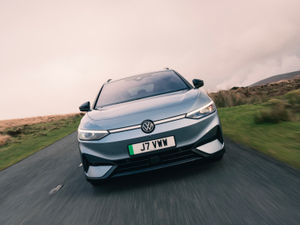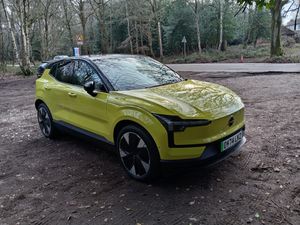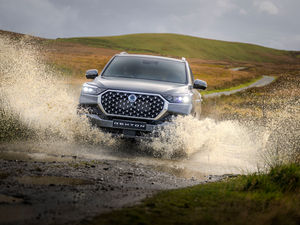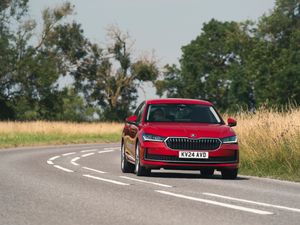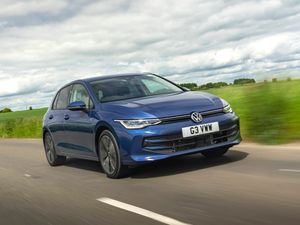First Drive: The Ford Focus Estate adds extra practicality to an already brilliant package
Tom Wiltshire heads to northern France to see if a little more junk in the trunk does anything to affect the new Ford Focus
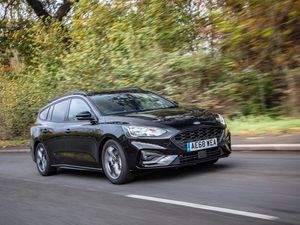
What is it?
We’ve known from the beginning that the Focus Estate was coming – revealed alongside hatchback and Vignale variants. The recipe is of course a very simple one, and it’s an industry-wide set of ingredients – take one hatchback, add a bit of extra bodywork over the rear axle and if you’re feeling really fruity, fettle the suspension ever so slightly.

The thing about the Focus Estate is that the base car is already the best-handling in its class – not to mention the best-selling. So does the extra heft spoil the brilliant Focus?
What’s new?
Unsurprisingly, the biggest change can be found from the C-pillar back – the Focus Estate receives a lengthened rear end with a more upright tailgate to accommodate a greater volume of luggage. That difference is notable, too – it has 608 litres of boot space, up from 375 litres in the hatchback and just a nick up on the VW Golf Estate’s 605 litres.

Other than that, there’s really nothing to note about the new Focus Estate. It obviously has all the same improvements as the hatchback model does – with a far superior interior to its predecessor, sharp-edged styling and those same great driving manners.
What’s under the bonnet?
There’s the expected range of engines – 1.0-litre and 1.5-litre EcoBoost petrols, and 1.5- or 2.0-litre EcoBlue diesels. Gearbox options are a six-speed manual with a pleasant, linear action, or a passable eight-speed automatic.
We hopped into one of the lower-powered diesel manual cars – likely to be popular among high-mileage or motorway drivers. It’s a good combination, as the engine feels plenty powerful and can overtake on faster roads with only a small degree of forward planning. It’s also efficient, with a claimed fuel economy figure of more than 70mpg.

Don’t write off the dinky petrols, though – they’re great, with loads of power, excellent refinement at motorway speeds and an unexpectedly throaty exhaust note. Unlike many small turbos, they don’t mind being revved either, making them the rewarding choice. Just don’t expect your fuel economy to be too high if you make use of all that shove.
What’s it like to drive?
The standard Focus hatch is one of the best-handling mid-sized cars on the market. With that in mind, the slight fettling of the rear suspension to deal with the extra weight hasn’t affected how the car drives one jot. In fact, other than seeing that the rear window is quite far away, you wouldn’t be able to tell.

The Focus handles brilliantly, remaining flat in corners with sharp, accurate steering and bags of front-end grip. Ride comfort in our ST-Line model isn’t the finest as a result of hefty, 18-inch alloy wheels, but opting for smaller rims does solve this to a degree – and the Focus is rarely truly uncomfortable.
Estates gain a multi-link rear suspension setup, which is an upgrade over the standard hatchback – although all ST-Line models get it as standard. In reality, you won’t notice the difference.
Put simply, keen drivers in this segment will be delighted with the Focus. It’s got a sense of balance and suppleness that nothing in the class can match – even the popular Golf.
How does it look?
Blink and you’ll miss it. Ford’s done an excellent job of integrating the Estate bodywork into the Focus, and the result is fairly handsome – if a little anonymous, depending on trim level. Up front, there’s a gaping and angular grille and sculpted bonnet, while a rising belt line lends the car a sportier stance.

Our ST-Line ramps up the car’s sporty character with the aforementioned alloy wheels, a black honeycomb front grille and black detailing across the body. It’s a popular trim level, especially among those who’d really like a full-fat ST but can’t quite afford the insurance or the running costs.
ST-Line models are also lowered by 10mm, which doesn’t sound like a lot but gives the Focus a much more purposeful look next to its Titanium and Vignale siblings.
Inside, there isn’t a great deal of design flair, but everything is sensibly situated and the tablet-style dash screen for the infotainment is easy to interact with.
What’s it like inside?
Rear passengers may note slightly improved headroom over the hatchback, but otherwise forwards of the boot this is pure Focus – that is to say, decently designed and built, but certainly not class-leading.
There’s space for four adults, although they’ll be far comfier in a Skoda Octavia, while the dashboard doesn’t have the air of solidity that pervades a VW Golf. It’s not all bad news, though – there’s good-quality soft-touch plastics across the dash and door tops, the controls are logically laid out and the gauge cluster is a model of clarity and common sense.

Ford’s latest Sync3 infotainment system takes star billing atop the dash, and although the interface looks a little clunky, it’s actually very effective and easy to use.
What’s the spec like?
Trim levels broadly mirror the hatchback, with Style, Zetec, ST-Line, Titanium and Vignale all on offer. Top-spec Vignale brings all manner of luxury goodies, including a panoramic roof, leather-wrapped dashboard and all-round LED lights, but even Zetec models have 16-inch alloy wheels, a heated windscreen, leather steering wheel, cruise control and smartphone connectivity.

Our mid-spec ST-Line added mostly styling details – with standard 17-inch wheels and alloy pedals, red stitching for the interior trim, a polished twin tailpipe and keyless start. If you want the sporty look but prefer a bit of extra kit, ST-Line X offers all-round parking sensors, auto lights and wipers, heated front seats, dual-zone climate control and an electric driver’s seat.
Verdict
The Ford Focus Estate is an excellent car – although that’s to be expected, with the hatchback being so good. Crucially, the additional bulk over the rear axle has no negative impact – this still drives, handles and operates in the same way as its hatchback sibling, and what’s not to like about that? If you’re looking into one of the VW Group’s numerous estate models, we’d suggest considering this first.

